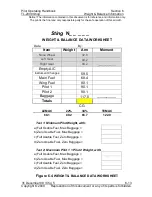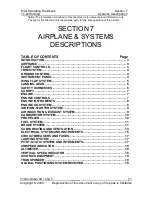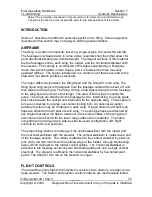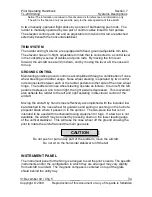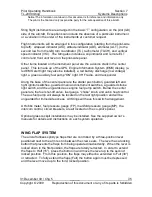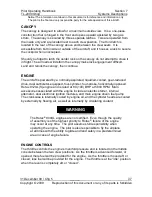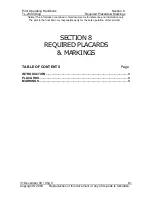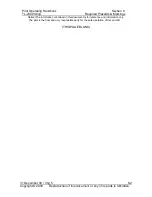
Pilot Operating Handbook
Section 7
TL-2000
Sting
Systems Descriptions
Notice! The information contained in this document is for reference and information only.
The pilot is the final and only responsible party for the safe operation of this aircraft.
31 December 09 / Chg 5
______
7-8
Copyright © 2009 Reproduction of this document or any of its parts is forbidden.
Do not pull aft hard on the throttle to lower the engine
rpm. The engine mounted throttle stops can be bent by
high pulling forces from the throttle cables. If the
engine rpm is too high, the idle speed should be
adjusted by the engine idle screws.
ENGINE INSTRUMENTS
The Engine Information System (EMS) is the primary display for monitoring engine
operation. The EMS displays the following data: RPM, manifold pressure, fuel
pressure, oil temperature, oil pressure, two cylinder head temperatures, 4 exhaust
gas temperatures, voltage, elapsed engine time, and total engine time. Individual
input limitations are preprogrammed into the system. If any of these limits are
exceeded, the EMS will alert with a light or change color to illuminate affected
display.
If installed, a difference of as much as 200 RPM can exist
between the Rotax
®
tachometer and the RPM indication on the
EMS. The EMS digital RPM readout is more accurate and
should be relied upon when in doubt.
Engine manifold pressure is monitored in the EMS display. The indication
interpreted from the remote sensor is displayed in two digits with a decimal point
and one more digit (eg 25.5) which is an indication of induction air manifold
pressure, and is measured in inches of mercury (InHg).
Fuel pressure is monitored in the EMS display. The indication interpreted from the
remote sensor is displayed in two digits (eg 35 or 3.5) which is an indication of 3.5
and is measured in pounds per square inch (PSI).
ENGINE OIL SYSTEM
The components of the oil system include: oil reservoir tank, oil cooler, oil filter,
engine-driven oil pump, and crankcase. Oil is introduced into the system via a cap
in the oil reservoir tank. The engine driven pump then draws the oil from the
reservoir, through the oil cooler, through the oil filter, and into the pump. Then the
oil is forced into the crankcase oil galleries for engine lubrication where it then
NOTE
NOTE






